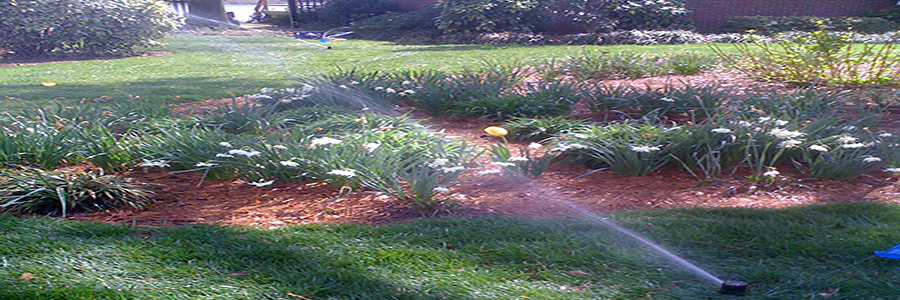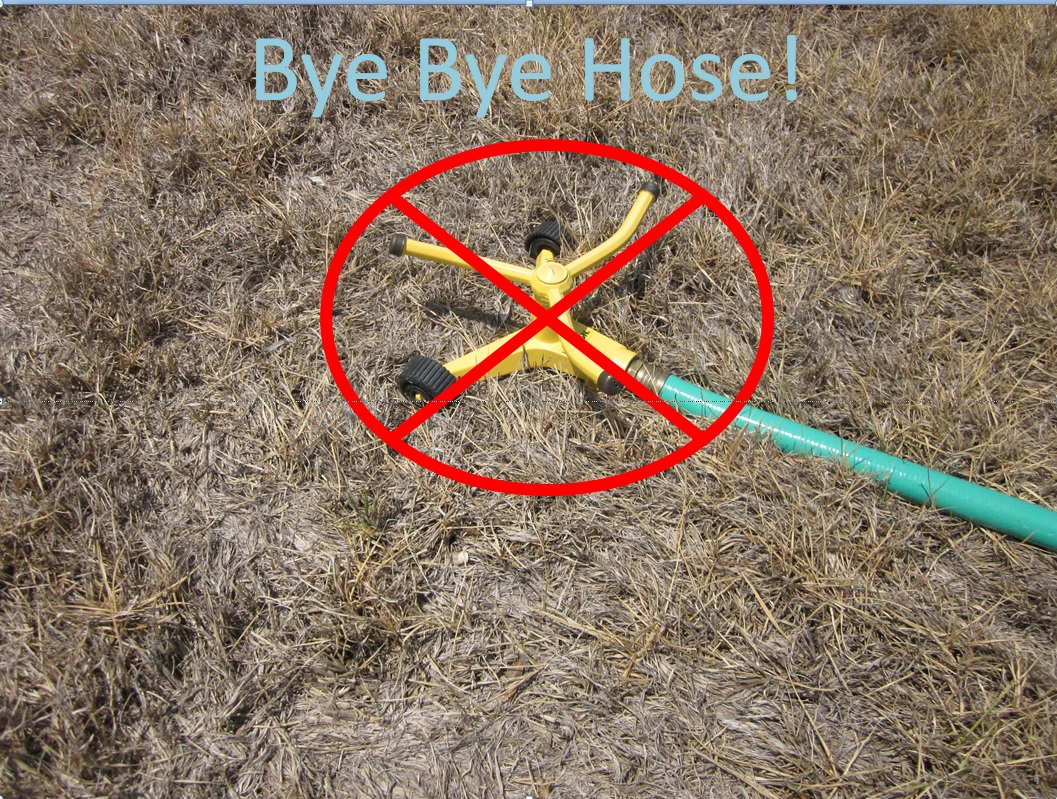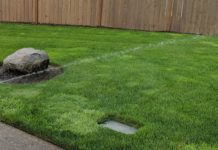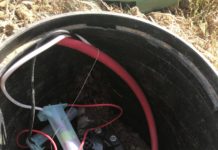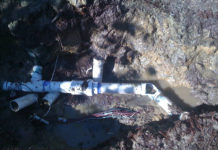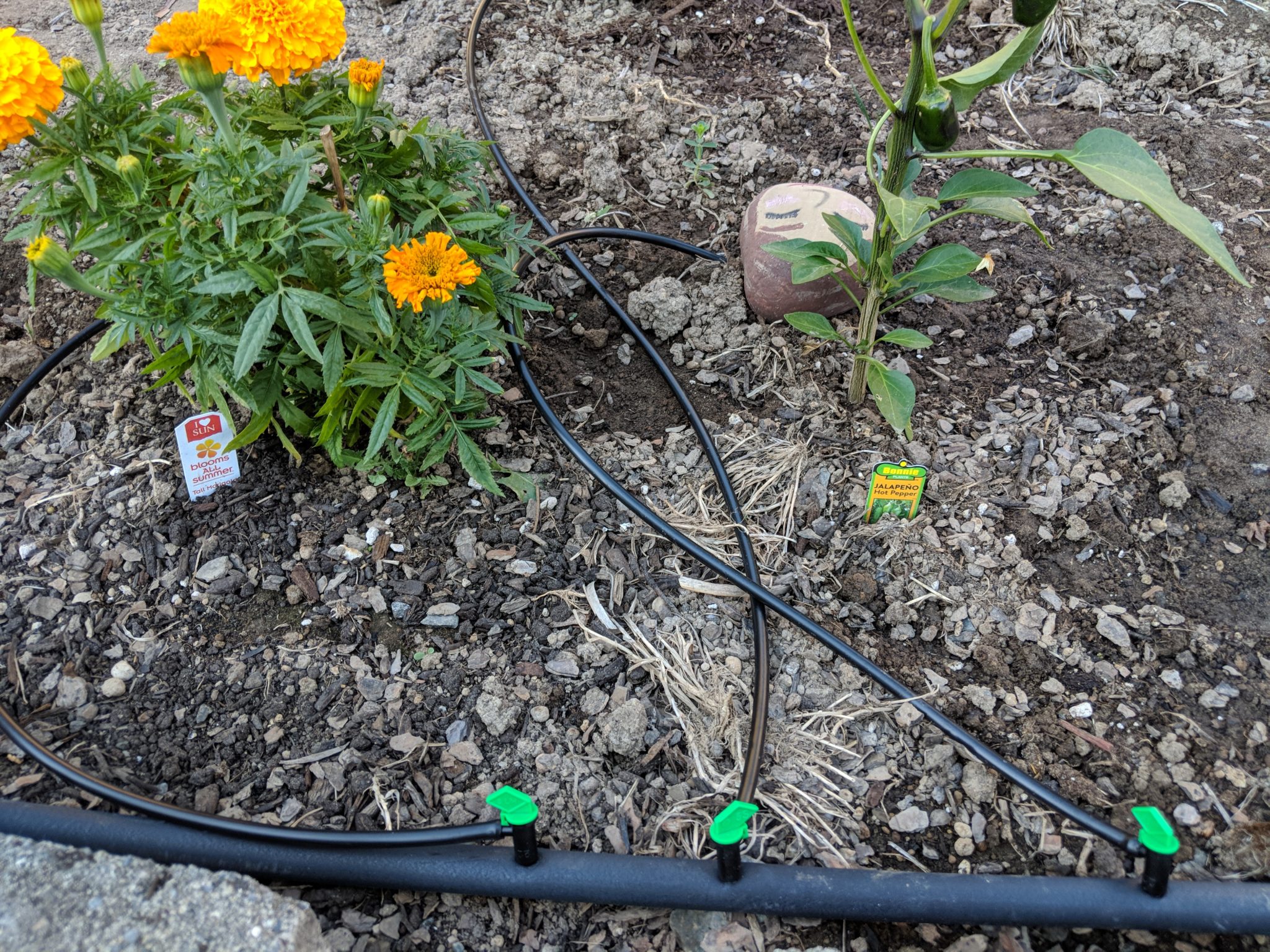There are millions of underground sprinkler systems throughout the world, but very few are programmed to water correctly. Let me show you when to water and explain why.
Too Much Is Bad
One of the biggest problems I have seen when it comes to sprinkler systems is when to water? Most people have a tendency to water too much and also water in the evening. This is not the right way!
By watering your lawn too much the roots of the grass do not grow down to search for more water. Instead, they tend to remain on the surface. This is fine when water is abundant, but as soon as the summer sun hits it, the turf quickly dries out!
As a result, you are forced into a vicious cycle of watering and leaving your lawn constantly soaking wet.
Should You Water At Night?
You may think that since it is cooler and the sun has gone down, it is a good time to water right? How many good things live in warm, dark, and moist places? In fact, I can’t think of one good thing that thrives in that type of environment. Well besides penicillin and who wants that in their yard?
So When Should You Water And For How Long?
You want to water early in the morning at dawn. The temperature is still cool, and the winds are usually low. In addition, by watering in the morning, this gives your lawn and landscape a chance to dry out over the course of the day.
More: Choosing a Smart Irrigation Controller
By allowing your landscape to dry out before watering again, it reduces the chances of developing unwanted pests and diseases. Also, as we talked about earlier restricting water will force your plants and turf grasses to search for new water sources promoting growth. If your yard is constantly wet, why would the plant grow more roots?
So What Do You Suggest?
A good rule to start with is to water rotor zones for twice as long as your spray zones. Why? Spray heads on average put out about the same amount of water as a rotor head, but it is over half the distance? Most spray heads spray between 10-15 feet out from the head. Whereas most rotor heads spray 20-30 feet out from the head.
They put out the same amount of water, but the rotors spread it out over a greater distance. Therefore they will need to run longer than the spray heads. As a generic program, I always suggest watering spray zones for 10-15 minutes and rotor zones for 20-30 minutes.
There are obviously some changes that will need to be made, but this is a good baseline to start with. If one zone is in full sun and another zone is shaded all day, you will need to increase the runtimes in the sunny zones and decrease the runtime in the shady zones.
How Often?
Once again you want to try and water a little as possible, I read somewhere that if you walk on your grass and it tends to lay down then it is begging to dry out. If it springs back up with a lush green color then it is fine.
Initially setting up a system I tend to water every other day or every third day. This will allow you to see what areas need more water and perhaps what areas are getting to little water.
I just seeded my yard now what do I do?
Grass seed and fresh sod need to stay moist all day, not soaked, moist. You can do this by watering multiple times per day, for shorter periods. For example, rotor zones will be 3-4 times a day for 10 minutes each and spray heads 3-4 times a day for 5 minutes each. I usually only water during daylight hours and not during the night unless there is low humidity and high winds, your landscape will remain wet overnight.
More: Choosing the Best Sprinkler Head.
The idea is to keep the seed moist so that it germinates, but you do not want to water too much allowing the seed to runoff or create a swamp. Continue this cycle for about a week or 2 then go back to once a day.
Conclusion
Watering your yard is simple, however, it can also cause unwanted problems if done incorrectly. As a rule, try to water your lawn and plants as least as possible, this will promote growth and stability.
